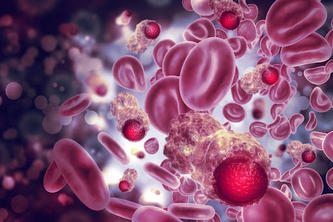
The depression started when she was 11 or 12. More than 25 years have passed since then, but Becky Steffens can date the onset by a crystal clear milestone.
“The first suicide attempt was at 12,” she says.
Once too ashamed of her depression to tell even her parents, she now wants to share her painful journey to help others. The turning point in that journey came when she found Cristina Sophia Albott, an M Health Fairview and University of Minnesota Medical School faculty psychiatrist.
“She’s kind of a superstar,” says Albott of Steffens, who she sees in the Interventional Psychiatry Program at the University of Minnesota Physicians St. Louis Park Clinic.
It can happen to anyone
Now a special education teacher, Steffens was her high school valedictorian and is generally the kind of person who keeps going no matter what. But while everybody may get an occasional bout of the blues, she too often had to stare down an unfathomable darkness.
Patients like Steffens find themselves in places where life doesn’t seem worth living.
That’s why she needed somebody like Albott, whose specialties include treatment-resistant depression. Her general approach is to stimulate areas in the brain believed to be the source of the dysfunction.
One tool in her medical toolbox is the vagal nerve stimulator (VNS). It works on the vagus nerve, which leads directly to and from the brain, connecting it with internal organs. VNS features an implantable device that targets mood control. Another tool, transcranial magnetic stimulation, attempts to break the cycle of depression.
“Brain stimulation is really … the future of psychiatry,” Albott says. “I mean, If you can treat the organ that is dysfunctional, without all the systemic side effects, who wouldn’t want that?”
Research and success
Wearing her other hat, Albott researches post-traumatic stress disorder (PTSD) and its outsized role in triggering treatment-resistant depression. She also studies the drug ketamine’s potential to stimulate, or even reset, brain circuitry damaged by trauma or depression.
Besides physical treatments, Albott uses talk therapy to help Steffens deal with traumatic life events that can trigger a flare-up.
“I can come in and have really high suicidal ideation and after treatment, that’s completely gone,” Steffens says.
But while these successes are heartening, much remains to be done in treating depression.
“The truth is, there aren’t many clinics that do what we do,” Albott says. “I wish there were more of us.”
Until that happens, Steffens has a message for her kindred spirits.
“I want people to know that there’s hope,” she says. “Maybe you can’t hold hope for yourself, but there are people who can hold it for you.”
- Categories:
- Health
- Health conditions
- Medical
- Treatments




